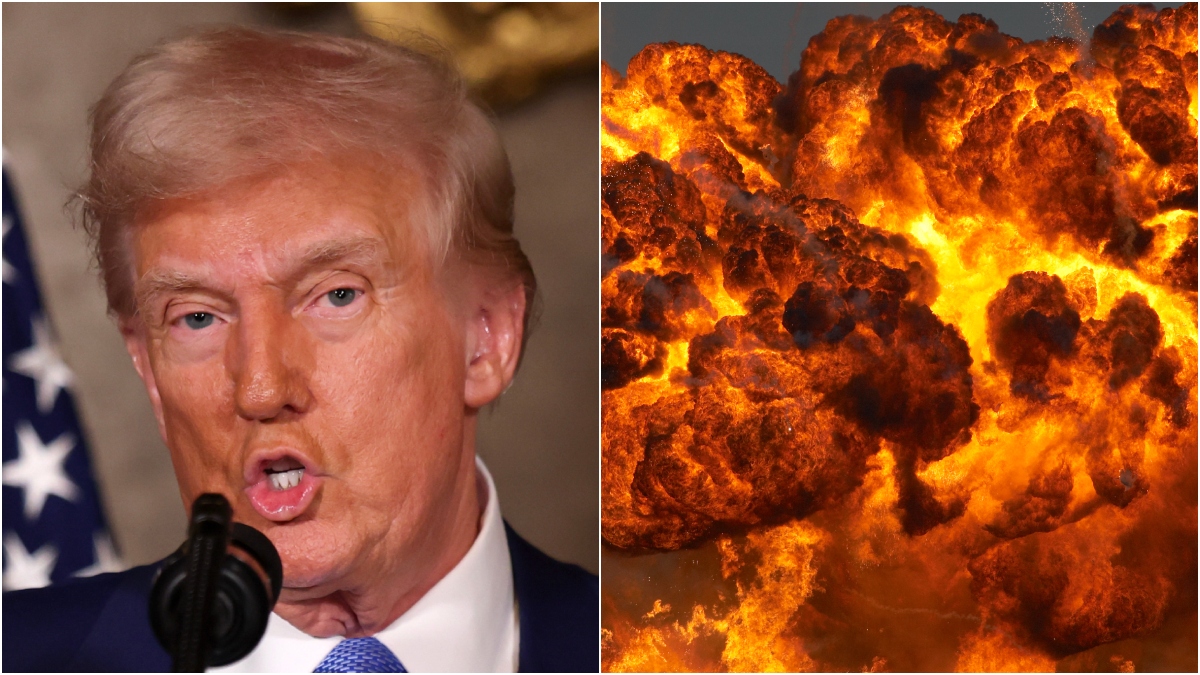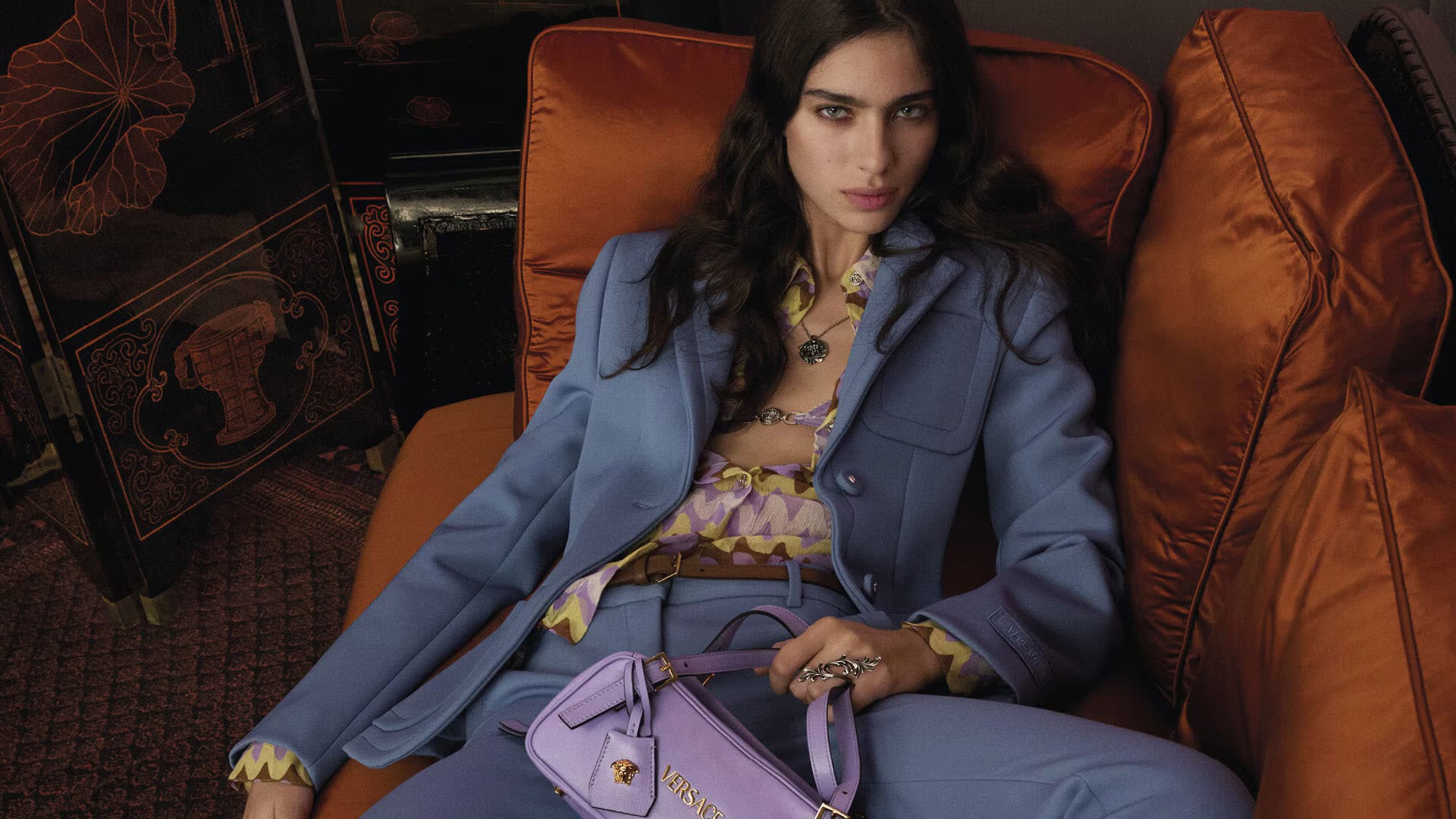A Dress To The Nation: Fashion’s Impact On American Politics

DOUGLAS, ARIZONA – SEPTEMBER 27: Democratic presidential nominee, U.S. Vice President Kamala Harris, … [+]
“Fashion is Inherently Political” is a common truism loosely thrown around in the fashion space.
The most seemingly virtuous manifestations of the politics of dress are also the most obvious. This can take the form of a protest, such as the Time’s Up campaign’s coordinated blackout at the 2018 Golden Globes, which brought necessary media attention to the #MeToo movement and the need for reform in the entertainment industry. Fashion can also be a social commentary, like Alexander McQueen’s final runway collection, Plato’s Atlantis, which gave us a glimpse into our projected societal collapse if the fashion industry continues to neglect the climate crisis.
BEVERLY HILLS, CA – JANUARY 07: (L-R) Musician Mariah Carey, actors America Ferrera, Natalie … [+]
However, when intentions are left surreptitious, fashion can be used as a political weapon. This manifestation of sartorial politics has played a vital role in not only the current election but the entire history of American politics.
In August, JD Vance’s campaign email shared an image of Kamala Harris wearing a necklace next to a screenshot from the Tiffany & Co. website listing said necklace for $62,000. The caption read, “Friend, when I saw this picture on Twitter, it instantly pissed me off.”
One of the potential criticisms here is that since this photo of Harris came from a video asking for donations to the Harris/Walz campaign, it is ironic and hypocritical to wear something that costs more than the average American citizen’s annual salary. At face value, this is a fair criticism; one’s opinion on wealth distribution can hold a lot of weight in how they might cast their ballot. However, the one minor detail left unchecked was that this was not the same necklace.
This fact becomes very apparent when looking at Harris’s jewelry compared to the photos of the alleged necklace worn by the model on the Tiffany & Co. website which shows that the $62,000 necklace is much too large to be the one worn by Harris. Notably, all photos that show the scale of this necklace were omitted from the initial picture shared in Vance’s email.
Interestingly enough, this was not the only time Harris was falsely accused of wearing nefarious jewelry this election season. During the presidential debate on September 10th, one conservative X (formerly Twitter) personality, Laura Loomer, suggests Harris was wearing Nova H1 Audio Earrings that were serving as wireless earphones. Others followed suit by proposing that these Bluetooth earrings could feed the vice president responses to the topics addressed during the debate. This conspiracy theory quickly took off, reaching over 6 million impressions on X and 50,000 shares on Facebook. But again, these were the wrong earrings.
The ones that Harris actually wore were the Tiffany HardWear Double Pearl Hinged Earrings in Sterling Silver. This is evident through the detailing on both pairs of jewelry. Harris’s hardware is sterling silver, whereas the Nova H1 Audio Earrings are gold. Harris’s earrings have a double band, and the Nova earrings only have one. Most importantly, the Nova earrings work as an earpiece, and the Tiffany earrings worn by the vice president do not.
Once this conspiracy theory was debunked, the criticism of Harris’s earrings rebranded as another social commentary on the price of her jewelry, the budget this time being $800. Though this is only a $100 price increase from the Nova H1 Audio Earrings, framing this condemnation under the guise of class consciousness isn’t nearly as exciting as leading with the accusation of a cabal controlling Harris through studded pearls.
After all, it is fair to assume that class consciousness is a dead-end when it comes to the general population’s introduction to the politics of fashion because one of its most potent weapons is status ambivalence. Maria Mackinney-Valentin describes this process in Fashioning Identity: Status Ambivalence as “a sartorial trick or ‘status ploy… deliberately misguiding those less versed in cracking dress codes.” This, of course, can look like sending out mass emails accusing your opponent of disregarding the economic status of American voters by way of a $62,000 necklace. While simultaneously, knowing that the average earner might not shop in this category enough, or at all, to know the difference. However, much more commonly, it looks like dressing as the image or status you want to portray, not necessarily the one you are. We have seen both in this election cycle.
Former US President Donald Trump (C) with First Lady Melania Trump (R) and daughter Tiffany Trump … [+]
Donald Trump’s unkempt suits have been a topic of discussion since he first ran for president in 2016. This, ostensibly, is not due to a lack of resources that could provide him with bespoke tailoring, but rather, could be a very intentional sartorial choice that helps visually align himself with the average American man. Instead of buying custom suits, Trump appears to opt for ones off the rack that are likely one or two sizes too big. This frumpy quality makes him more approachable and seemingly a more relatable presidential candidate.
Donald Trump is not the only person in American politics to have this approach to fashion. George W. Bush frequently adorned his suits with cowboy hats, John Kerry and Bruce Rauner were big fans of barn jackets during their political campaigns, and Ron Desantis notably wore fishing shirts throughout the Republican primary. Perhaps the most consistent political advocate for casual clothing is John Fetterman, who has gone as far as to wear basketball shorts on the Senate floor; though there has been consistent pushback for the latter. One of the most considerable fashion controversies developed after Barack Obama infamously wore a tan suit.
WASHINGTON, DC – AUGUST 28: U.S. President Barack Obama makes a statement at the James Brady Press … [+]
This controversy emerged in August 2014 when President Barack Obama wore the suit during a press briefing at the White House discussing the prospect of a military response to ISIS. This was quickly met with a sea of criticism, primarily focusing on the perceived informality of the suit in contrast to the gravity of the subject material. But, as previously mentioned, not only was Obama not the first Head of State to wear seemingly casual clothing, but he was also not the first president to wear a tan suit.
President Ronald Reagan chose to wear a khaki-colored suit to the signing ceremony of the Japanese-American Internment Compensation Bill. This bill granted $20,000 in reparations to every surviving Japanese-American incarcerated in internment camps during World War II. This was one of the vilest crimes committed by the American government against its own people. Inarguably, this signing ceremony was of great political importance, yet there weren’t dozens of headlines condemning the president for his sartorial ignorance.
One likely reason for this is that, historically, tan suits were not widely seen as casual. Menswear writer, Christian Barker notes “before all and sundry had ready access to washing machines or laundromats, only the wealthy could afford to wash their clothing regularly. The [working class] were forced, for practical reasons, to wear dark colours – blue, grey, black and brown.” Laborers who wore suits in more casual scenarios had to opt for darker-colored clothing that made concealing stains and wear much easier. This is where we get the classist roots of fashion faux pas like “Don’t wear white after Labor Day.”
So not only are the claims that Obama’s suit was ignorantly casual arguably arbitrary, but they also perfectly co-exist with Trump’s sartorial ambivalence in a classic example of status inversion. Trump can deliberately dress in casual workwear, but when Obama wears a suit that is historically tied to the upper class, he is accused of doing that very same thing.
CHICAGO, ILLINOIS – AUGUST 19: Democratic presidential candidate, U.S. Vice President Kamala Harris … [+]
This biased form of fashion criticism is imposed onto many other politicians who upend the political status quo, which we can see in the fact that Kamala Harris’s wardrobe has been subjected to such public scrutiny. We saw similar criticism for Hilary Clinton and Angela Merkel, who all shared the commonality of potentially being the first woman to be Head of State in their respective countries. These women share very similar fashion preferences, with the most recognizable wardrobe staple being pantsuits.
The pantsuit has a long history in women’s politics. For hundreds of years a man in a suit has been synonymous with authority, so women historically adopted the look to assimilate in male-dominated spaces.
MUNICH, GERMANY – FEBRUARY 05: US Secretary of State Hillary Clinton (R) and German Chancellor … [+]
Since the first female congresswoman, Jeanette Rankin, was elected in 1917, the wardrobes of women in office became a topic of public concern. A Washington Post headline from March 4 of that year read, “Congresswoman Rankin Real Girl; Likes Nice Gowns and Tidy Hair.” The following article aimed to dispel the “concern” that Rankin was “a severely-gowned woman, with spectacles, straight-combed hair, stiff white collars and spats.” Instead, the writer assured the readers that she was “described as a woman who is thoroughly feminine—from her charmingly coiffed swirl of chestnut hair to the small, high and distinctively French heels. She is given to soft and clinging gowns.” This effort to excessively feminize female politicians may not only be done out of sexualization but also because, culturally, femininity is associated with subjugation, which is why scholars believe many women in politics feel the need to distance themself from it.
American politician and peace activist Jeannette Rankin (1880 – 1973), circa 1918. She was was the … [+]
At the end of the day, fashion and identity are intrinsically linked. While some political powers have complete freedom in their sartorial mobility, others are confined to subverting preconceived notions and rationalizing their right to walk a mile in their own shoes. In a way, the politics of dress can give us a glimpse into certain freedoms that are at stake. After all fashion means nothing without the body that’s wearing it.
Related
Trudeau says Canada will issue 25% tariffs on $155B of…
'The Bottom Line' panelists Lee Carter and Liz Peek give their take on President Donald Trump confirming the 25% tariffs. Canadian Prime Minister Justin T
Cartel Violence Kills American Citizen In Brutal Fashion. Will Trump…
PublishedFebruary 25, 2025 4:34 PM EST|UpdatedFebruary 25, 2025 4:35 PM ESTFacebookTwitterEmailCopy LinkAn American citizen is dead after a cartel-linked bombin
Luxury Briefing: Tapestry, Capri and the American fashion portfolio shakeup
In this week’s Luxury Briefing: The fallout from the failed Tapestry-Capri merger continues, with Tapestry selling Stuart Weitzman and Capri reportedly eyeing
Liz Truss tells CPAC UK is ‘failing’ and needs Maga-style…
Liz Truss, the former British prime minister, told a rightwing conference in the US that her country was “failing” and needed a Donald Trump-style “Maga�













